I remember watching and replaying Fight Club on Satellite TV repeatedly when I was 12. While at the time, I couldn’t fully grasp the message behind Chuck Palahniuk’s novel, I was captivated by the story, Fincher’s direction and the actors’ performances
I watched this movie on repeat until I was 16, and by then, I had a deeper understanding of its meaning and messages, though I lacked the real-life experiences to fully grasp them consciously.
Looking back, this film makes perfect sense, and it’s no surprise that even at 12, we were already able to recognize the pitfalls of our future lives in it.
A few words on Fight Club
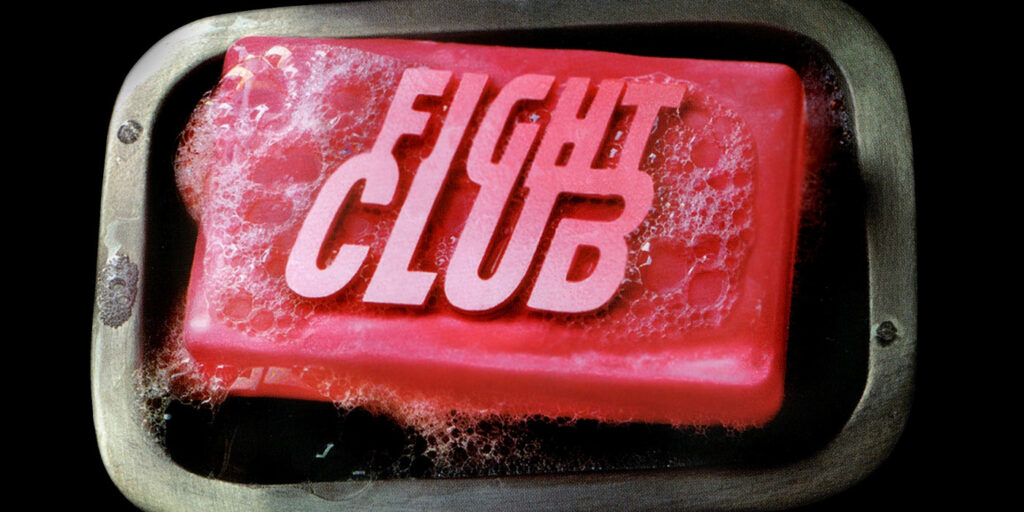
Fight Club is David Fincher’s film released in 1999 starring Edward Norton and Brad Pitt. It is a visceral exploration of identity, masculinity, and rebellion against modern consumerist society. Through the Narrator’s descent into chaos alongside the enigmatic Tyler Durden, the film critiques the emptiness of materialism and the suppression of primal instincts. It delves into the struggle between self-destruction and self-liberation, ultimately revealing that true freedom lies not in blind rebellion, but in reclaiming one’s own identity.
The themes behind Fight Club
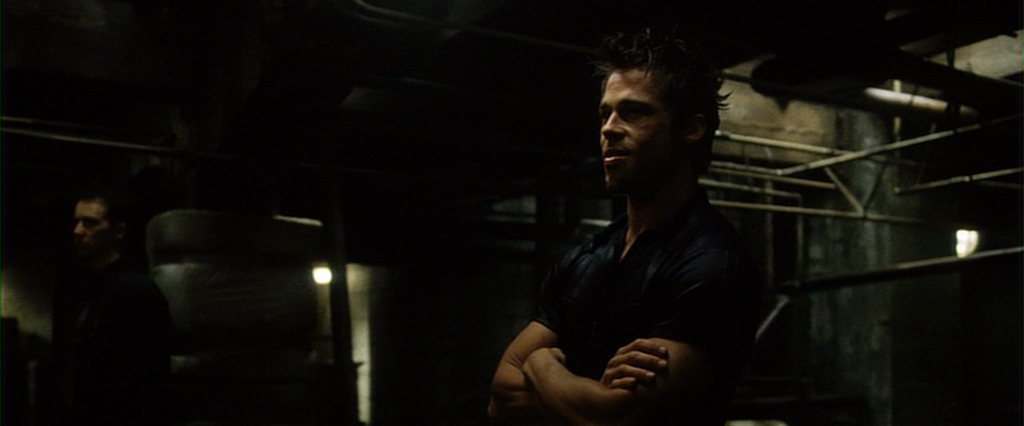
Fight Club explores several deep and interconnected themes:
- Consumerism and Materialism: The film critiques the consumer-driven society, where people define themselves through possessions, brands, and material wealth. The Narrator’s obsession with buying things, like Ikea furniture, symbolizes the emptiness of such a lifestyle.
- Identity and Self-Discovery: The protagonist’s journey is about breaking free from societal expectations and discovering his true self. His alter ego, Tyler Durden, represents the rejection of conventional identity and the desire to create something more authentic.
- Masculinity and Alienation: The film delves into modern masculinity, exploring the feelings of alienation, frustration, and emotional numbness that many men feel in the face of a society that expects them to be powerful yet submissive.
- Rebellion Against Society: Both the Narrator and Tyler reject societal norms and structures. Tyler advocates for chaos and destruction as a means of breaking free from the constraints of a conformist world.
- Violence and Catharsis: The brutal fights in the movie serve as a way for the characters to feel alive, challenging the idea that violence is a destructive force. Instead, it becomes a form of release, catharsis, and self-empowerment.
- Mental Health and Psychological Struggles: The film also portrays the Narrator’s descent into mental illness, highlighting how internal struggles manifest externally and the dangers of dissociating from one’s true self.
- Existentialism and Freedom: Fight Club explores the notion that true freedom comes not from wealth or material possessions, but from the destruction of the ego and the acceptance of chaos. It questions the meaning of life, self-worth, and the role of the individual in society.
- Self-Destruction and Rebirth: The destruction throughout the film, both literal and symbolic, serves as a path toward rebirth. It challenges the idea that we must “destroy” parts of ourselves to build something new.
The main story of Fight Club
The story of Fight Club mirrors the existential journey of the Prodigal Son in the Bible. Here’s how their narratives align
1. The False Self – Living Under an Illusion
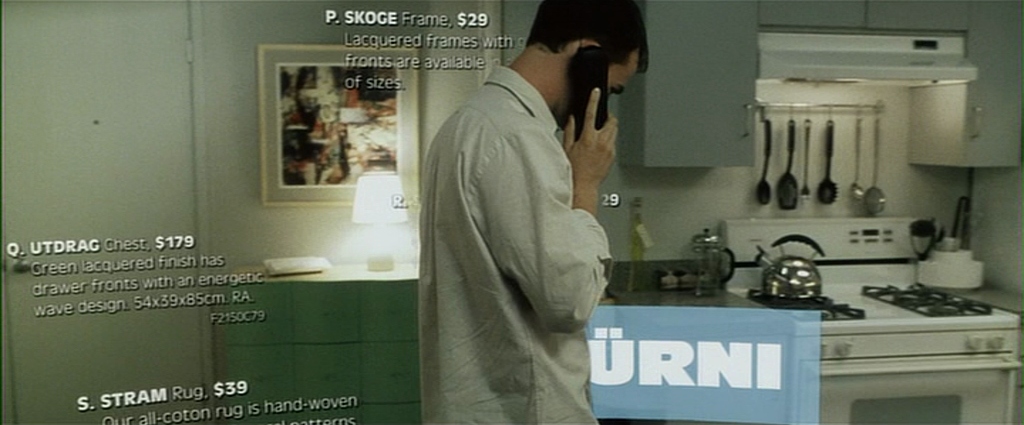
- In Fight Club, the Narrator starts as a slave to consumerism, societal expectations, and comfort. He fills his life with Ikea furniture and an empty job, believing that meaning comes from possessions.
- The Prodigal Son, similarly, believes that freedom means indulgence, that by claiming his inheritance and living recklessly, he will discover himself.
- Both are chasing an illusion, believing that meaning comes from external things—money, status, pleasure—rather than inner truth.
2. The Breakdown – Losing Everything to Find the Truth
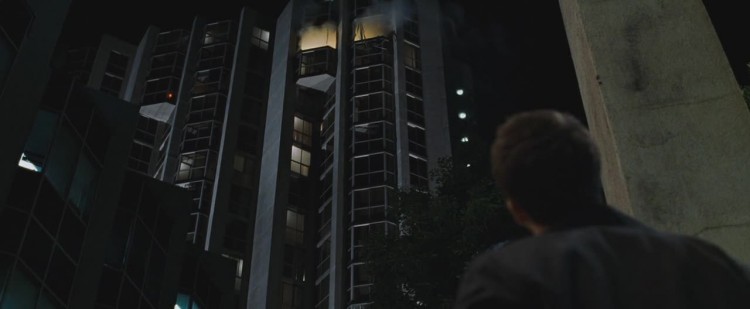
- The Narrator’s life collapses when his apartment is destroyed, symbolizing the death of his materialistic identity. He then meets Tyler Durden, who teaches him that true freedom comes from letting go of control, from embracing destruction as a form of rebirth.
- The Prodigal Son hits rock bottom when he loses everything and is forced to feed pigs, an act that strips away his ego and makes him realize he was never truly free.
- Both characters experience the death of their false selves—one through physical destruction, the other through suffering and humiliation.
3. The Truth – Only After Losing Everything Are You Free
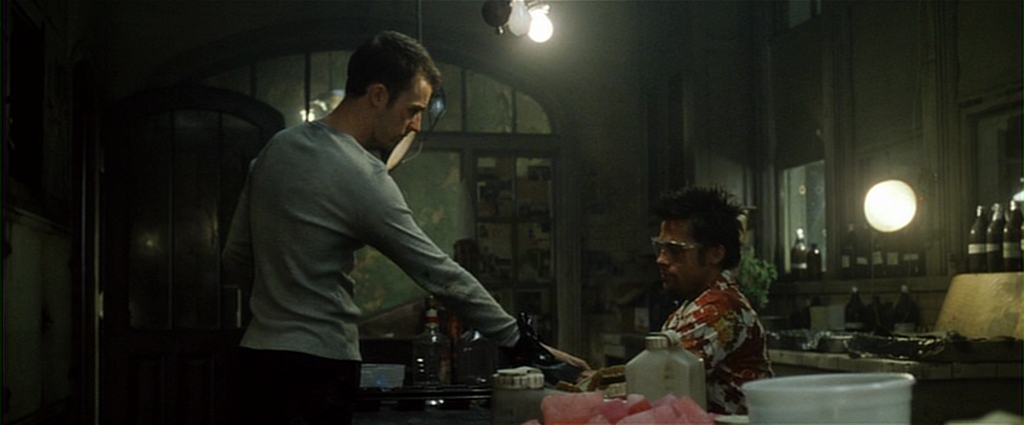
- Tyler tells the Narrator: “It’s only after we’ve lost everything that we’re free to do anything.” This mirrors the Prodigal Son’s realization that freedom does not come from external indulgence, but from radical authenticity and surrender.
- The Narrator is only free once he stops clinging to his old self. The Prodigal Son is only free once he lets go of pride and returns home, humbled but true.
- Both must accept suffering and loss as a path to rebirth—the Narrator through chaos and destruction, the Son through repentance and grace.
4. The Return – Embracing the True Self
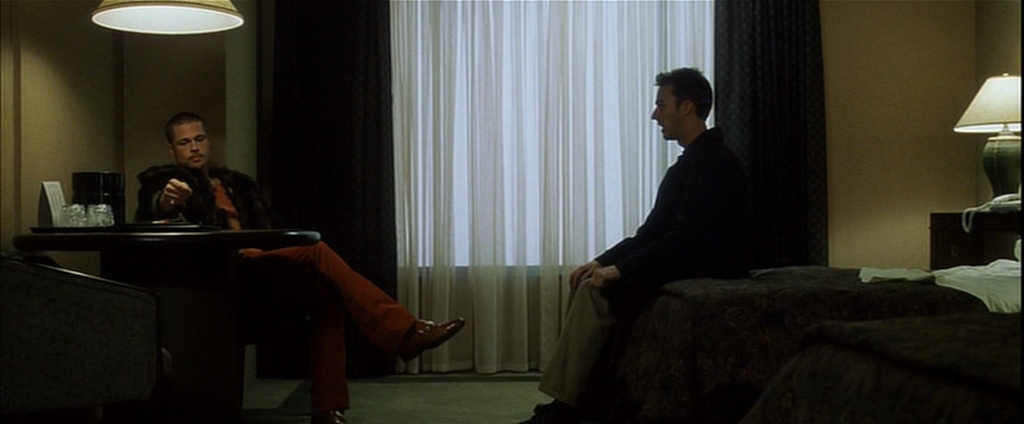
- The Prodigal Son returns home not as a master, but as a servant. Yet in this humility, he is restored as a son. True identity is not built by external achievements but by accepting who we truly are.
- The Narrator ultimately realizes that he and Tyler are the same, and that his struggle was always an internal one. In rejecting Tyler, he reclaims his own identity, understanding that true freedom is not mindless destruction but self-ownership.
Losing Yourself to Find Yourself
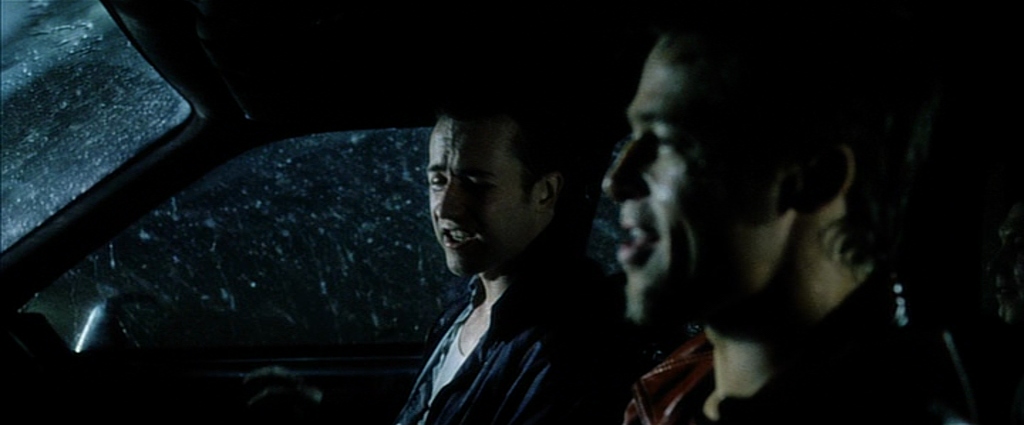
Both stories show that self-discovery requires destruction—not of the body, but of the false identity we cling to. The Prodigal Son and the Narrator both lose everything and are stripped to nothing before they can be truly free.
- The Son finds truth through humility and love.
- The Narrator finds truth through destruction and self-confrontation.
- Both prove that freedom is not about escaping limits, but about embracing the truth of who you really are.
Tyler Durden character Analysis
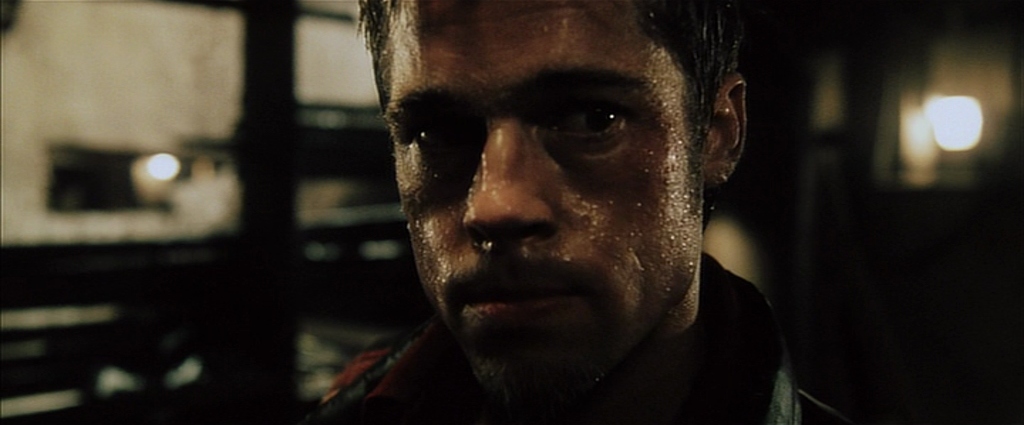
Tyler Durden, as portrayed in Fight Club, embodies many of the qualities associated with Friedrich Nietzsche’s concept of the Übermensch (Overman or Superman). Nietzsche’s Übermensch is an individual who has transcended conventional morality and societal constraints, creating their own values and purpose. Tyler represents this ideal by rejecting the norms of modern society, which he sees as enslaving individuals to consumerism, conformity, and mediocrity. Here’s how Tyler Durden aligns with the concept of the Übermensch and how his “Project Mayhem” aims to free people from slavery:
Tyler Durden as the Übermensch:
- Rejection of Conventional Morality: The Übermensch creates his own set of values and doesn’t adhere to the moral codes imposed by society. Tyler rejects the values of consumerism, materialism, and conformity, which he believes lead to the suppression of true human potential. He critiques the modern notion of success—wealth, status, and comfort—as hollow and soul-crushing. Instead, he advocates for a more primal, instinctual way of living, where people embrace their raw, untamed selves. Even when Robert Paulson dies, he see it as a natural occurence, “you need to break some eggs to make an omelette”.
- Self-Overcoming and Creation of New Values: Nietzsche’s Übermensch is constantly in a state of self-overcoming—transforming and redefining oneself in the pursuit of personal greatness. Tyler embodies this principle through his personal philosophy and actions, particularly in how he leads his followers to break free from their own limitations. His own life is one of constant reinvention, from his chaotic behavior to his rejection of societal labels and expectations.
- Mastery Over the Self and the World: Tyler represents a kind of self-mastery that transcends the need for social approval or material gain. He takes control of his environment, leads by example, and manipulates situations with extreme confidence. His charisma and ability to shape people’s thoughts and actions mirror Nietzsche’s concept of the Übermensch as a master of both self and the world around him.
Project Mayhem: Aiming to Free People from Slavery
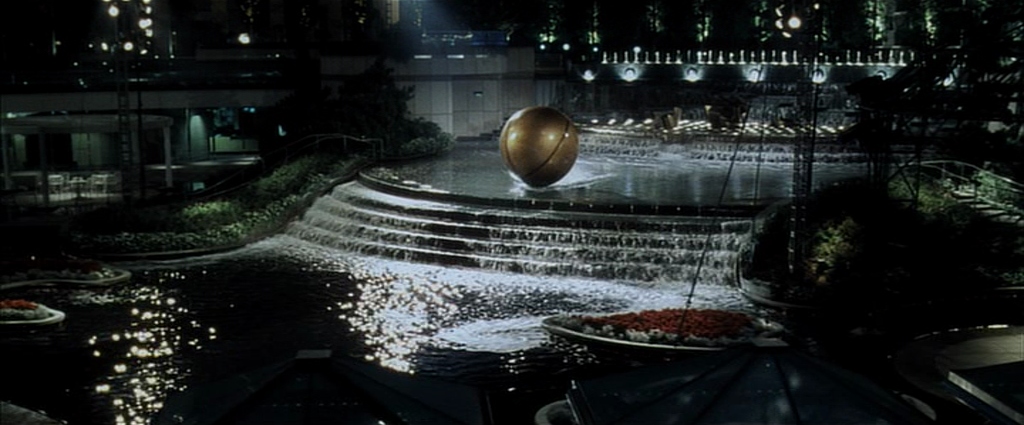
Tyler’s Project Mayhem is an extension of his philosophy—an extreme means of liberating people from what he perceives as the “slavery” of modern life. Here’s how his movement aligns with the goal of freeing individuals:
- Destruction as Liberation: Project Mayhem seeks to dismantle the structures of modern society that enslave individuals. Tyler believes that the only way to truly free people from the mindless cycles of consumerism, work, and societal expectations is through destruction—chaos, in a sense, acts as a cleansing force. By erasing people’s personal histories (e.g., through the destruction of financial records) and creating anarchy, he forces individuals to confront the emptiness of their lives and rebuild themselves without the constraints of the systems that have oppressed them.
- Breaking Free from Social Norms: Project Mayhem recruits followers who are willing to abandon their previous lives and identities, mirroring Nietzsche’s idea of self-overcoming. The members of Project Mayhem give up their personal desires and individuality for a greater cause: to disrupt and destroy the societal system that keeps them enslaved. By erasing their personal histories, Tyler forces them to confront the idea that they are not defined by their past or the labels society has placed on them.
- Rejection of Consumerism: One of the key ways Tyler aims to free people is by targeting the structures that perpetuate consumerism—such as credit card companies and large corporations. The destruction of corporate institutions is symbolic of freeing individuals from the chains of materialism. By causing financial chaos, Project Mayhem seeks to shatter the illusion that consumer goods and wealth can provide meaning, encouraging people to redefine their lives beyond possessions and status.
- Reclaiming Personal Power: Through Project Mayhem, Tyler encourages people to rediscover their personal power by rejecting the roles and responsibilities that society has imposed on them. The initiation of each member into Project Mayhem is a form of rebirth, where they are “purged” of their old selves and forced to embrace chaos as a way to reclaim control over their lives.
In sum, Tyler Durden’s Übermensch ideals are embodied in his rejection of societal norms and his radical, anarchistic vision of freedom. Project Mayhem is his vehicle for freeing people from the “slavery” of consumerism, social conditioning, and the false identities they’ve been forced to adopt. However, the extreme methods he uses to achieve this goal—destruction and violence—raise significant moral questions about the true cost of freedom and self-liberation.
A few words on Anarchy
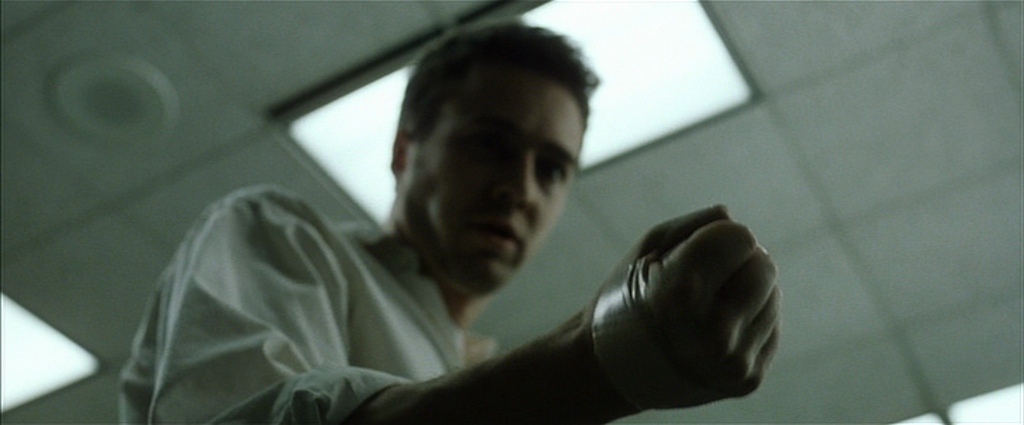
Henri Cartier Bresson use to say
Anarchy is a responsibility
Society often denies humanity’s darker traits, pushing them to the margins or suppressing them entirely in favor of idealized virtues such as kindness, rationality, and order. This denial creates a false narrative about human nature, presenting individuals as inherently good or capable of achieving perfection through moral and social progress.
Yet, by neglecting the darker aspects of our nature—such as aggression, jealousy, greed, and the capacity for cruelty—society fails to address the complexities and contradictions that define humanity. These traits, while destructive if left unchecked, are integral to the human experience, and when repressed, they can manifest in harmful ways, often distorting the truth of who we are.
By refusing to acknowledge and understand these traits, society perpetuates a sanitized version of human existence, one that lacks depth and fails to confront the full spectrum of our nature, both light and dark.
In this sense, Fight Club—a secret underground space where men engage in raw physical combat—becomes a rediscovery of these darker traits, intrinsically linked to the will to power and the drive to reclaim one’s individual sovereignty.
The meaning behind the ending
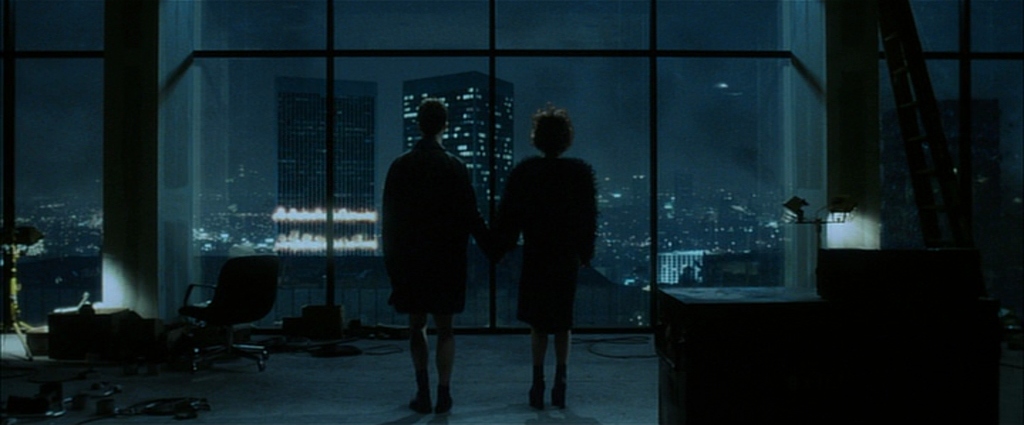
The Narrator’s fight against Tyler Durden and his eventual decision to shoot himself symbolize his struggle to reclaim his own identity and break free from the destructive ideology Tyler represents. At first, Tyler Durden embodies the Übermensch—Nietzsche’s concept of the self-overcoming individual who transcends societal norms and moral constraints. Tyler rejects consumerism, embraces chaos, and seeks to forge a new, liberated identity free from external control. However, while Tyler initially appears to offer freedom, his philosophy becomes tyrannical, evolving into Project Mayhem, a movement that strips people of their individuality in pursuit of a grand ideological vision.
The Narrator realizes that while Tyler helped him break free from societal conditioning, he has now become a new form of oppression—one that demands blind obedience rather than true self-liberation. To reclaim his autonomy, the Narrator must confront and destroy Tyler. The act of shooting himself in the mouth is deeply symbolic: it represents his rejection of Tyler’s nihilistic extremism and an attempt to sever his own self-destructive impulses. By surviving the gunshot, the Narrator metaphorically “kills” the false identity Tyler imposed on him, signaling a rebirth—one where he can forge his own path, neither enslaved by society nor by Tyler’s violent rebellion.
Is Tyler Durden philosophy realistic in the real world?
In a way, Tyler Durden’s philosophy, if fully embraced, would make it difficult for him to enjoy life in a conventional society. Tyler’s worldview rejects the very structures that society is built upon—consumerism, social norms, materialism, and order. His idea of freedom is rooted in rejecting these constraints and embracing chaos, destruction, and self-overcoming.
While this could lead to personal liberation in the sense of breaking free from societal conditioning, it also creates a paradox. Society, by nature, is structured around cooperation, rules, and a certain level of stability. For someone like Tyler, who advocates for total upheaval and destruction of those structures, living a peaceful, enjoyable life within society would be almost impossible.
For Tyler, happiness or fulfillment seems to come from pushing boundaries, rebelling, and creating anarchy—not from the comfort of social integration or traditional success. In that sense, he may find it hard to find peace or contentment in a society that he sees as enslaving people to hollow pursuits. His rejection of these societal structures leaves him in a constant state of unrest, unable to truly settle into a conventional life.
However, his extreme views also raise the question of whether true freedom can ever exist in a balanced way within society. Can someone reject social norms entirely and still find personal happiness within those very norms? Would the lack of structure and stability eventually leave him feeling unfulfilled, even if he finds brief moments of “freedom”?
The key, as always, is finding a balance between order and chaos—enough order to provide predictability, yet enough chaos to allow real life to unfold.
What do you think—do you feel that rejecting societal norms might lead to ultimate freedom, or does it simply create an unending cycle of rebellion that prevents true peace or fulfillment?


GIPHY App Key not set. Please check settings